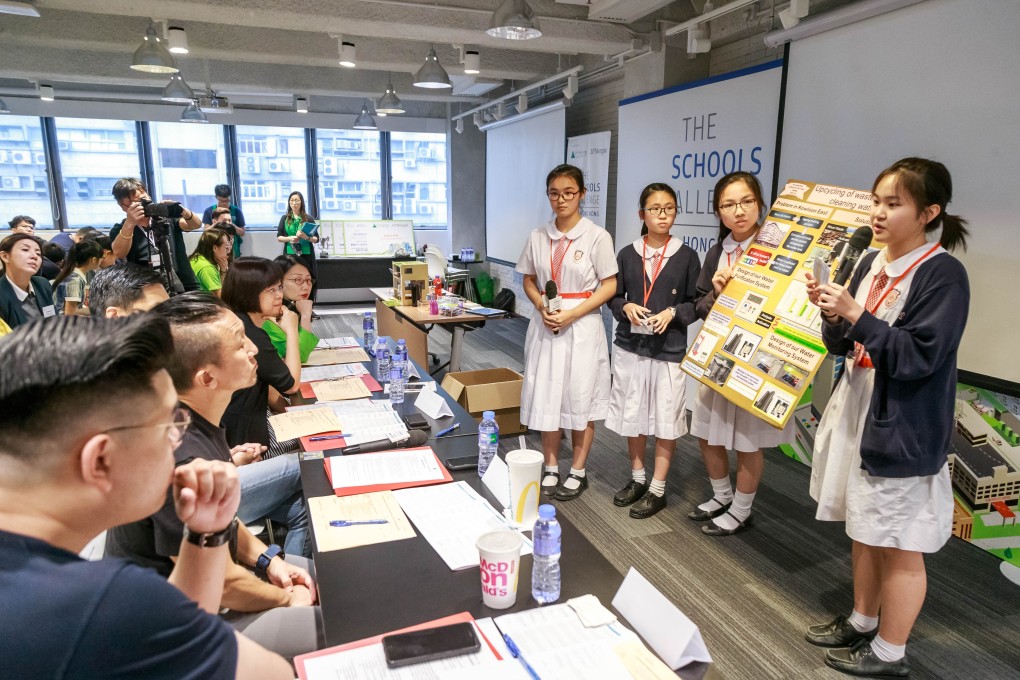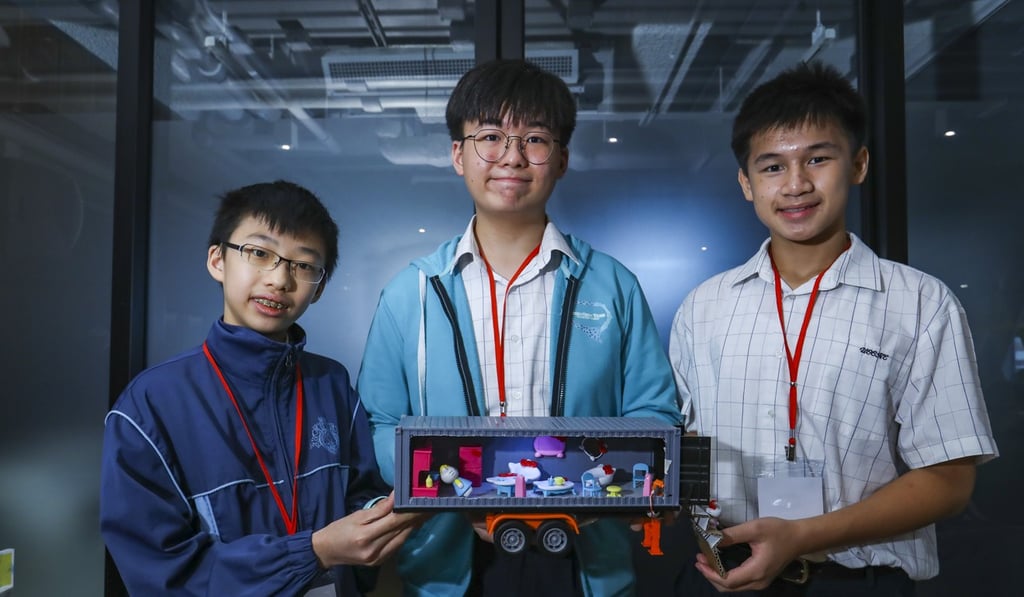A boxing machine that charges your mobile phone and other innovative ideas as Hong Kong schoolchildren aim to transform old industrial neighbourhood of Kwun Tong
- The 26 entries for the Schools Challenge Hong Kong – Live Smart @ Kowloon East offer a host of innovations for imaginative repurposing of urban spaces
- The ideas range from shipping container shops, boxing machines that recharge mobile phones and a water purification system for buildings

A proposed student project, which is one of the entries in a social innovation programme for secondary schoolchildren, could rejuvenate dank, deserted side streets and alleyways in Hong Kong’s industrial district of Kwun Tong. The plan would bring the streets to life using shipping containers refurbished as mobile shop units offering anything from Chinese herbal tea to garment repair services.
The idea is the brainchild of Form Two student Poon Tsz-yui and his schoolmates Bobby Lo Hei-chit and Tommy Wong Cheuk-Ho from United Christian College (Kowloon East). The group was one of 26 competing in the Schools Challenge Hong Kong – Live Smart @ Kowloon East, a social innovation programme for junior secondary school students.
The team’s idea, called “The Movin’ Alleys”, came third in the contest.
“Our team hopes that the mobile container shops can provide operators with premises at affordable rents,” Poon says. The shops, about 57 sq ft each in size, can change location from time to time, with the moves charted on a mobile app for customers.

Vivian Lau Sio-kuan, one of the event judges and also CEO of Junior Achievement Asia-Pacific, an NGO focusing on youth issues, says: “We are impressed by how the ‘Movin’ Alleys’ project tackles the hygiene problem at its roots by attracting people to underused alleys.”